
Are you curious about the current state of Saigon’s housing market? With rapid urbanization, fluctuating real estate trends, and evolving government policies, navigating this vibrant market can be both exciting and challenging. Let’s explore what makes this city a unique landscape for renters, homeowners, and savvy investors alike.
The Saigon housing market is booming, driven by strong economic growth and rising demand for residential properties. Key trends include increasing apartment prices, high rental yields, and expanding opportunities for foreign investment. This article delves into pricing trends, market segmentation, and future forecasts, giving you a complete picture of Saigon’s dynamic real estate market.
Ready to uncover the key insights shaping Saigon’s housing market? From expert predictions to actionable tips, we’ve compiled a detailed guide for renters and investors. Let’s dive into the full story and help you make smarter, well-informed decisions. For more on rentals, visit RentPro.vn!
Overview of Saigon Housing Market
1.1 Current Market Trends and Key Statistics
Saigon’s housing market is buzzing with activity, driven by rapid urbanization and growing demand for residential properties. Apartment prices in central districts average $3,266 per square meter, with a 75% price increase from 2017 to 2019. However, a dip in supply has created a competitive landscape, with high rental yields ranging from 3.7% to 4.0% in prime areas.
Popular Districts for Rentals:
- District 1: Known for luxury apartments and vibrant nightlife.
- District 2 (Thao Dien): Offers premium living with international schools nearby.
- District 7 (Phu My Hung): Family-friendly area with a mix of villas and modern condos.
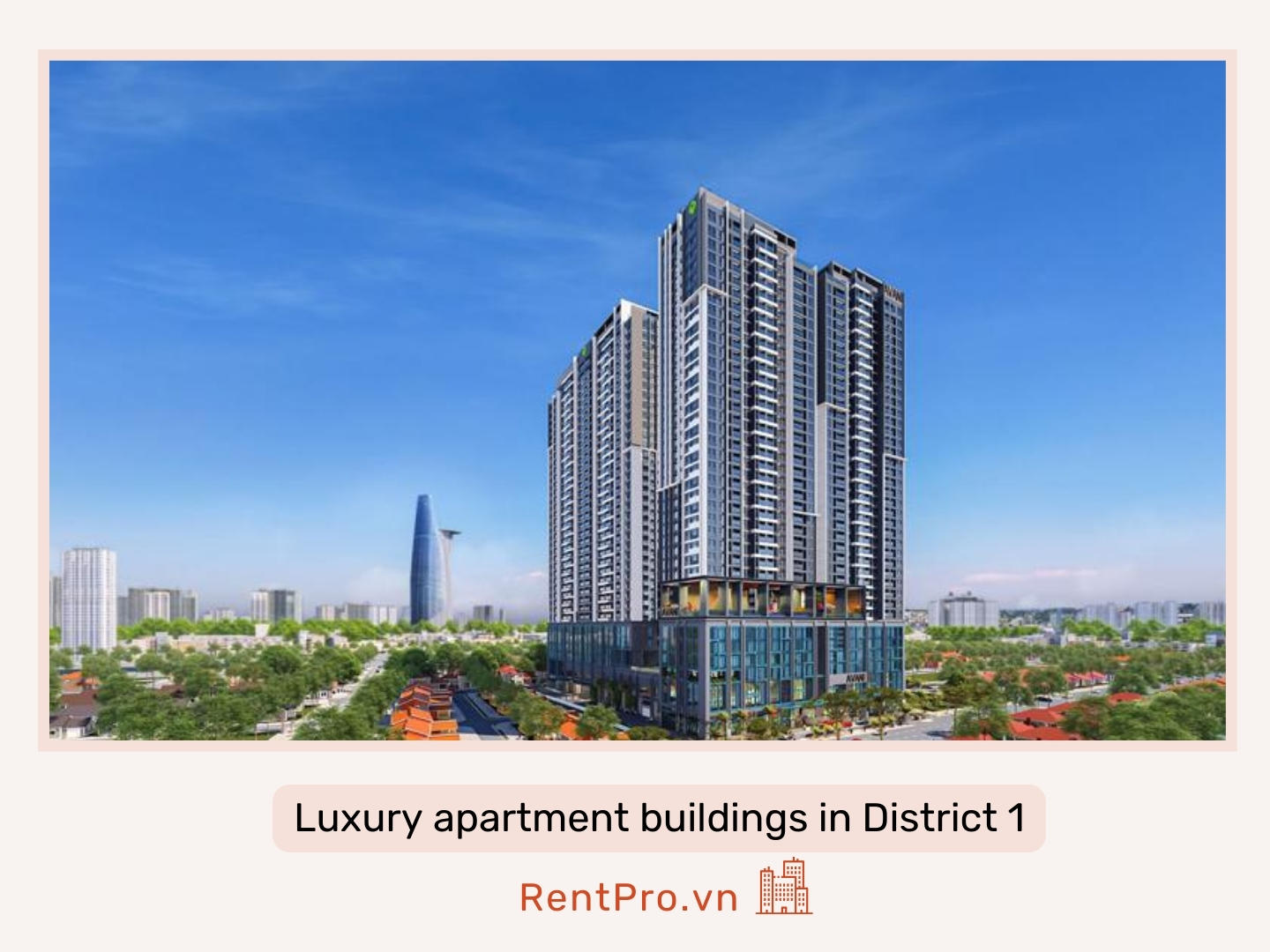
1.2 Historical Growth and Market Evolution
Historically, Saigon’s real estate has demonstrated resilience through economic fluctuations. During 2017-2019, the market saw a robust 75% price growth, while housing remained relatively stable even during the global pandemic. Recent changes, such as foreign ownership liberalization in 2014, have further bolstered investor confidence, especially among overseas buyers.
Key Milestones in Saigon Housing History:
- 2014: Liberalization of property laws for foreigners.
- 2019: Launch of mega-projects like Vinhomes Central Park.
- 2020-2023: Market adapts to global pandemic challenges with minimal disruptions.
1.3 Economic Context and Its Influence on the Housing Market
The economic backbone of Saigon’s housing market lies in Vietnam’s rapid GDP growth, which surged by 8% in 2022 and stabilized at 5.66% in Q1 2024. A growing middle class with increasing disposable incomes has fueled demand, particularly for mid-range housing. Meanwhile, foreign direct investment, exceeding $2.47 billion in 2024, reflects the international appeal of Saigon’s property sector.
Economic Highlights Driving the Market:
- Foreign Investment Leaders: Singapore, Japan, South Korea.
- Infrastructure Development: Expansion of Ring Road 3 and Metro Line 1 to improve connectivity.
- Key Drivers: Rising disposable income, urbanization, and government incentives.
Pro Tip: Plan your visits to explore new developments during weekdays to avoid the crowds and secure the best deals in Saigon’s housing hotspots.
Key Drivers of Housing Demand
2.1 Urbanization and Population Growth
Saigon is experiencing rapid urbanization, with 40% of Vietnam’s population living in urban areas, projected to reach 45% by 2030. This growth has created a consistent demand for residential properties, particularly in districts with well-developed infrastructure. Areas like District 9 and Thu Duc City have become hotspots for new developments, offering affordable housing options for a growing middle class.
Urbanization Hotspots:
- Thu Duc City: Emerging as Saigon’s new economic hub.
- District 9: Popular for mid-range housing and connectivity to industrial zones.

2.2 Employment Rates and Disposable Income
Saigon’s economic dynamism is fueled by its high employment rates and rising disposable income among residents. The city boasts employment rates exceeding 97%, with sectors like technology, finance, and services driving economic growth. This financial stability enables residents to invest in better housing, from luxury apartments to mid-range condominiums.
Key Economic Sectors:
- Technology: Companies like FPT and VNG expanding operations.
- Finance: Major banks like Vietcombank driving job creation.

2.3 Migration Trends (Domestic and International)
Migration has significantly impacted Saigon’s housing demand. Domestically, workers flock from rural provinces to urban districts like Binh Tan and Go Vap, creating a surge in rental demand. Internationally, expatriates from South Korea, Japan, and the US often choose premium locations like Thao Dien in District 2, known for its upscale housing and international schools.
Popular Migrant Areas:
- Binh Tan District: Affordable rentals for domestic workers.
- Thao Dien, District 2: High-end homes for expatriates.
2.4 Tourism and Expatriate Influence
Tourism remains a key driver of Saigon’s housing market, with over 7.6 million foreign visitors in early 2024. Many expatriates working in industrial parks or foreign-owned companies prefer serviced apartments in districts like Phu Nhuan and Tan Binh. Rental yields in these areas are attractive, averaging 3.7% to 4%, making them ideal for investors targeting expatriate tenants.
Expat-Focused Areas:
- Phu Nhuan District: Central location with serviced apartments.
- Tan Binh District: Close to the airport and popular among business travelers.
Pro Tip: If you’re an investor, focus on properties in international hubs like Thao Dien or Phu Nhuan to cater to the growing expatriate community.
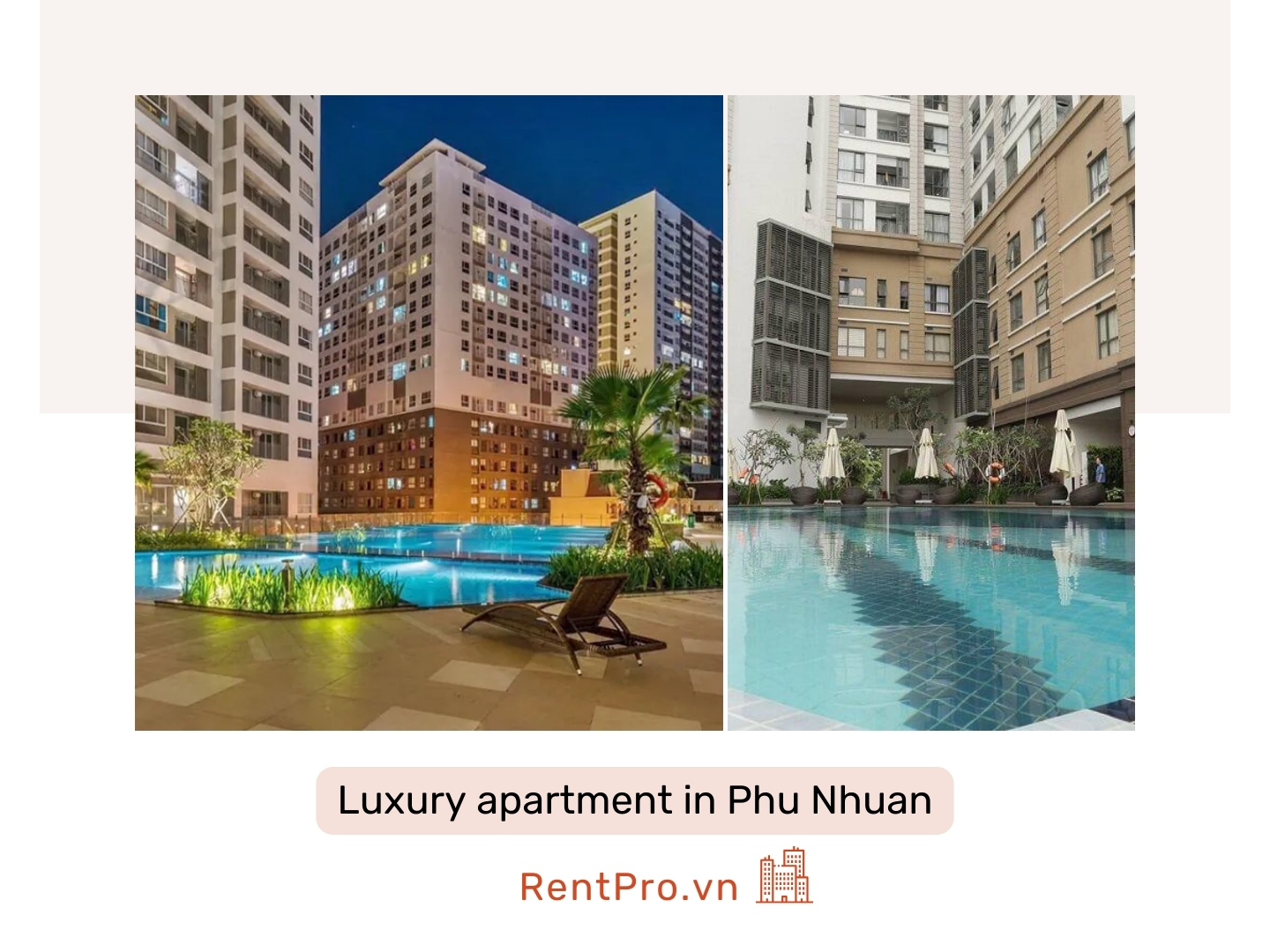
Housing Supply and Availability
3.1 Current Housing Inventory and Categories
Saigon’s housing inventory offers a wide range of options, from luxury apartments to affordable townhouses. In Q1 2024, the total stock included over 12,928 apartment units in Hanoi and approximately 4,922 units in Saigon, highlighting a significant shortfall compared to rising demand. The market’s segmentation caters to diverse needs: high-end condominiums dominate in districts like District 1, while mid-range housing thrives in areas like Binh Tan.
Key Categories of Housing:
- Luxury Apartments: Found in District 1 and Thao Dien.
- Mid-Range Housing: Popular in Binh Tan and Go Vap.
- Affordable Units: Available in suburban areas like Binh Chanh.
3.2 New Developments and Construction Projects
Despite a sluggish supply in Q1 2024, new projects like Vinhomes Grand Park and Khai Hoan Prime are set to reshape Saigon’s housing market. Developers are focusing on integrated residential complexes offering modern amenities and green spaces. Additionally, 84,400 units are expected from new projects by 2025, driven by expansions into satellite districts like Dong Nai.
Notable Upcoming Projects:
- Vinhomes Grand Park: A mega-project featuring high-tech living.
- Dong Tang Long-Hung Gia: Premium townhouses starting at $393,437.
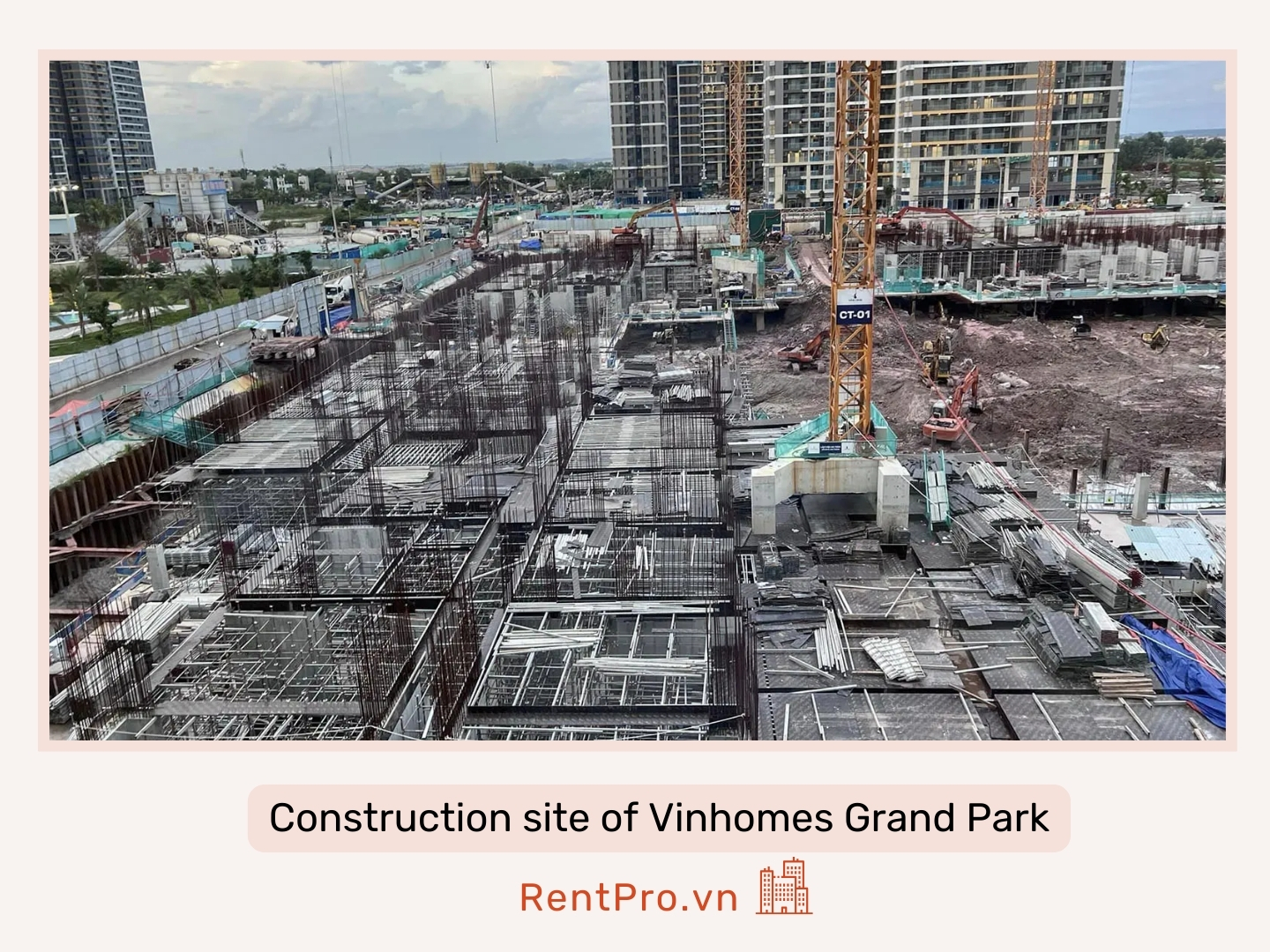
3.3 Impact of Government Policies on Housing Supply
Government policies play a pivotal role in shaping Saigon’s housing availability. The 2023 amendments to the Land and Housing Laws, set to take effect in 2025, aim to simplify regulations for developers and foreign investors. Programs like social housing initiatives have also spurred development in industrial zones like Bac Ninh and Long An, ensuring affordable options for workers.
- Government-Driven Projects:
- Social Housing in Long An: 310,000 units planned.
- Industrial Housing in Binh Duong: Supporting the local workforce.
3.4 Challenges Faced by Developers
Developers in Saigon face numerous obstacles, including stringent legal requirements and high construction costs. Smaller firms struggle with accessing capital, causing delays and reduced scales of operation. For instance, 9 projects were temporarily halted in Q1 2024 due to incomplete legal paperwork. Infrastructure bottlenecks further complicate timely project delivery in burgeoning districts like Thu Duc City.
- Key Challenges:
- Legal Compliance: Strict ownership and licensing processes.
- Capital Shortages: Smaller developers lack access to consistent funding.
- Infrastructure Gaps: Areas like Binh Chanh lag in connectivity.
Pro Tip: Investors should prioritize projects led by established developers like Vinhomes to minimize risks associated with construction delays and legal hurdles.
Housing Price Trends and Influencing Factors
4.1 Current Pricing Metrics (Average Cost per Square Meter)
Housing prices in Saigon continue to climb, reflecting the city’s growing economic prominence. As of Q1 2024, the average price for apartments in Saigon is $3,266 per square meter, slightly higher than the previous year. High-end condominiums in District 1 command even higher prices, reaching upwards of $4,500 per square meter, while mid-range units in districts like Binh Tan average around $2,000 per square meter.
Price Highlights:
- Luxury Apartments: Starting at $4,500/m² (District 1).
- Mid-Range Options: Around $2,000/m² (Binh Tan).
- Affordable Housing: Below $1,500/m² (Binh Chanh).
4.2 Comparison of Pricing Across Saigon’s Districts
Real estate prices vary significantly across Saigon’s districts, influenced by location, infrastructure, and amenities. Central areas like District 1 and District 3 are the most expensive, while emerging hubs such as Thu Duc City offer more affordable options. Suburban districts like Binh Chanh and Cu Chi provide budget-friendly housing but with fewer conveniences.
- District Pricing Comparison Table:
| District | Price Range (per m²) | Highlights |
|---|---|---|
| District 1 | $4,000–$5,000 | Luxury condos, proximity to CBD |
| Thu Duc City | $2,500–$3,200 | Emerging tech and education hub |
| Binh Tan | $1,800–$2,200 | Affordable housing for families |
| Binh Chanh | $1,200–$1,500 | Budget-friendly options for new buyers |
4.3 Impact of Lending Rates and Mortgage Availability
Lending rates and mortgage availability heavily influence Saigon’s housing affordability. As of 2024, banks like Vietcombank offer fixed mortgage rates ranging between 5.5% and 7%, significantly lower than the 9%-10% rates in 2023. This drop in rates has spurred demand for mid-range housing but has limited impact on luxury properties, which are predominantly purchased outright by wealthy buyers.
- Key Lending Institutions:
- Vietcombank: 6% for 24-month mortgages.
- Shinhan Bank: Starting at 5.5% for 36 months.
4.4 External Factors (Inflation, Foreign Investment, Regulations)
External factors like inflation, foreign investment, and government policies play a pivotal role in shaping Saigon’s housing market. With $2.47 billion in foreign direct investment (FDI) in real estate during 2024, interest from countries like Singapore and Japan remains high. Meanwhile, inflation at 4.34% has led to costlier construction materials, indirectly raising housing prices. The 2023 housing law amendments aim to attract more overseas buyers, further influencing pricing dynamics.
External Influences Summary:
- FDI Contribution: Singapore leads with $5.58 billion in investments.
- Inflation Impact: Higher construction costs translate to rising home prices.
- Regulatory Changes: 2023 housing law amendments simplify ownership for foreigners.
Pro Tip: For first-time buyers, focus on districts like Thu Duc City or Binh Tan to benefit from competitive pricing and potential value appreciation.
Investment Opportunities in Saigon Real Estate
5.1 Popular Types of Properties for Investment
Saigon’s real estate market offers diverse investment options, catering to both local and international buyers. Luxury condominiums in District 1 remain a favorite among high-net-worth investors, while mid-range apartments in Thu Duc City attract those seeking steady rental income. Additionally, mixed-use developments and serviced apartments are gaining popularity, especially in expatriate-friendly areas like Phu Nhuan.
Top Property Types for Investment:
- Luxury Condominiums: High ROI potential in central districts.
- Mid-Range Apartments: Steady rental demand in suburban hubs.
- Serviced Apartments: Preferred by expatriates and corporate tenants.
5.2 Areas with the Highest ROI Potential
Certain districts in Saigon stand out for their exceptional return on investment (ROI) potential. District 2 (Thao Dien) boasts high-end properties with rental yields averaging 4%-5%, thanks to its appeal among expatriates. Emerging locations like Binh Chanh and Thu Duc City offer affordable entry points with significant room for capital appreciation.
ROI Highlights by Area:
- District 2 (Thao Dien): Luxury market with stable rental demand.
- Thu Duc City: Tech hub with growing mid-range housing projects.
- Binh Chanh: Affordable pricing and increasing connectivity.
5.3 Long-Term vs. Short-Term Investment Perspectives
Investors in Saigon face a clear choice between long-term and short-term strategies. Long-term investments in suburban districts like Binh Tan yield steady returns, fueled by ongoing infrastructure development. Short-term opportunities, such as flipping high-end properties in District 1, offer quicker profits but require higher initial capital and market acumen.
Investment Strategy Tips:
- Long-Term: Focus on districts with major infrastructure projects (e.g., Metro Line 1).
- Short-Term: Target luxury pre-construction condos for quick flips.
5.4 Trends in Foreign Direct Investment in Real Estate
Foreign direct investment (FDI) in Saigon’s real estate sector continues to soar, with $2.47 billion recorded in 2024. Singapore leads the way, accounting for over 36% of total investments, followed by Japan and South Korea. Recent regulatory changes, including the liberalization of foreign ownership laws, have further incentivized overseas buyers to enter the market.
Key FDI Trends:
- Singapore: Focus on luxury developments and integrated townships.
- Japan & South Korea: Investments in mid-range and industrial housing.
- Regulatory Boost: New laws simplify ownership for foreign buyers.
Pro Tip: To maximize ROI, consider investing in districts supported by robust infrastructure projects, such as Thu Duc City, which is poised for substantial growth.
Challenges and Risks in the Saigon Housing Market
6.1 Regulatory Hurdles for Local and Foreign Investors
Navigating Saigon’s real estate market often involves overcoming complex regulations, especially for foreign investors. Despite the 2014 liberalization of property laws, ownership is limited to 30% of a condominium or 250 properties per administrative area for foreigners. Additionally, the 50-year ownership cap, although renewable, creates uncertainty for long-term investments. Local developers also face bureaucratic delays in securing permits, slowing project launches.
Key Regulatory Challenges:
- Foreign ownership caps and limitations.
- Lengthy permitting processes for developers.
- Compliance with evolving land use regulations.
6.2 Volatility in Pricing and Market Stability
The Saigon housing market has shown strong growth, but price volatility remains a significant risk. Apartment prices rose by 75% between 2017 and 2019, but supply shortages in Q1 2024 have caused fluctuations in key districts. High mortgage rates during 2023 discouraged transactions, while rate cuts in 2024 sparked a surge in demand, adding to price instability.
- Notable Price Trends:
- District 1: Stable high-end pricing, resistant to market shocks.
- Binh Tan: Moderate volatility in the mid-range segment.
- District 9: Price-sensitive to infrastructure developments.
6.3 Infrastructure Constraints Affecting Housing Development
Saigon’s infrastructure, while rapidly improving, still lags behind its housing market growth. Projects like Metro Line 1 and Ring Road 3 are critical but delayed, limiting access to emerging districts like Thu Duc City. Additionally, uneven infrastructure distribution creates bottlenecks in areas like Binh Chanh, reducing their appeal to investors and homeowners.
- Infrastructure Bottlenecks:
- Delayed Metro Line 1 impacts commuting convenience.
- Lack of road connectivity in suburban districts.
- Limited public transport options in peripheral areas.

6.4 Environmental and Urban Planning Concerns
Environmental degradation and inconsistent urban planning pose long-term risks to Saigon’s housing market. The rapid pace of construction has led to deforestation and strain on natural resources. Additionally, unregulated developments in flood-prone areas have exposed investors to property damage risks during monsoon seasons. The government is working on zoning reforms, but enforcement remains a challenge.
- Environmental Risks:
- Flooding in Districts 7 and 8 during heavy rains.
- Deforestation linked to urban sprawl in Binh Duong.
- Over-reliance on groundwater in suburban developments.
Pro Tip: When investing, prioritize areas with completed infrastructure projects and avoid properties in flood-prone zones to mitigate long-term risks.

Market Segmentation Analysis
7.1 Luxury Housing Market Overview
The luxury housing market in Saigon is thriving, fueled by demand from high-net-worth individuals and foreign investors. Prime areas like District 1 and Thao Dien in District 2 offer upscale condominiums with world-class amenities, priced at $4,000 to $5,000 per square meter. These properties cater to buyers seeking exclusivity and convenience, often featuring private gyms, pools, and concierge services.
- Key Luxury Developments:
- Vinhomes Golden River: High-rise apartments overlooking the Saigon River.
- The Nassim: Premium condos with private elevators in Thao Dien.
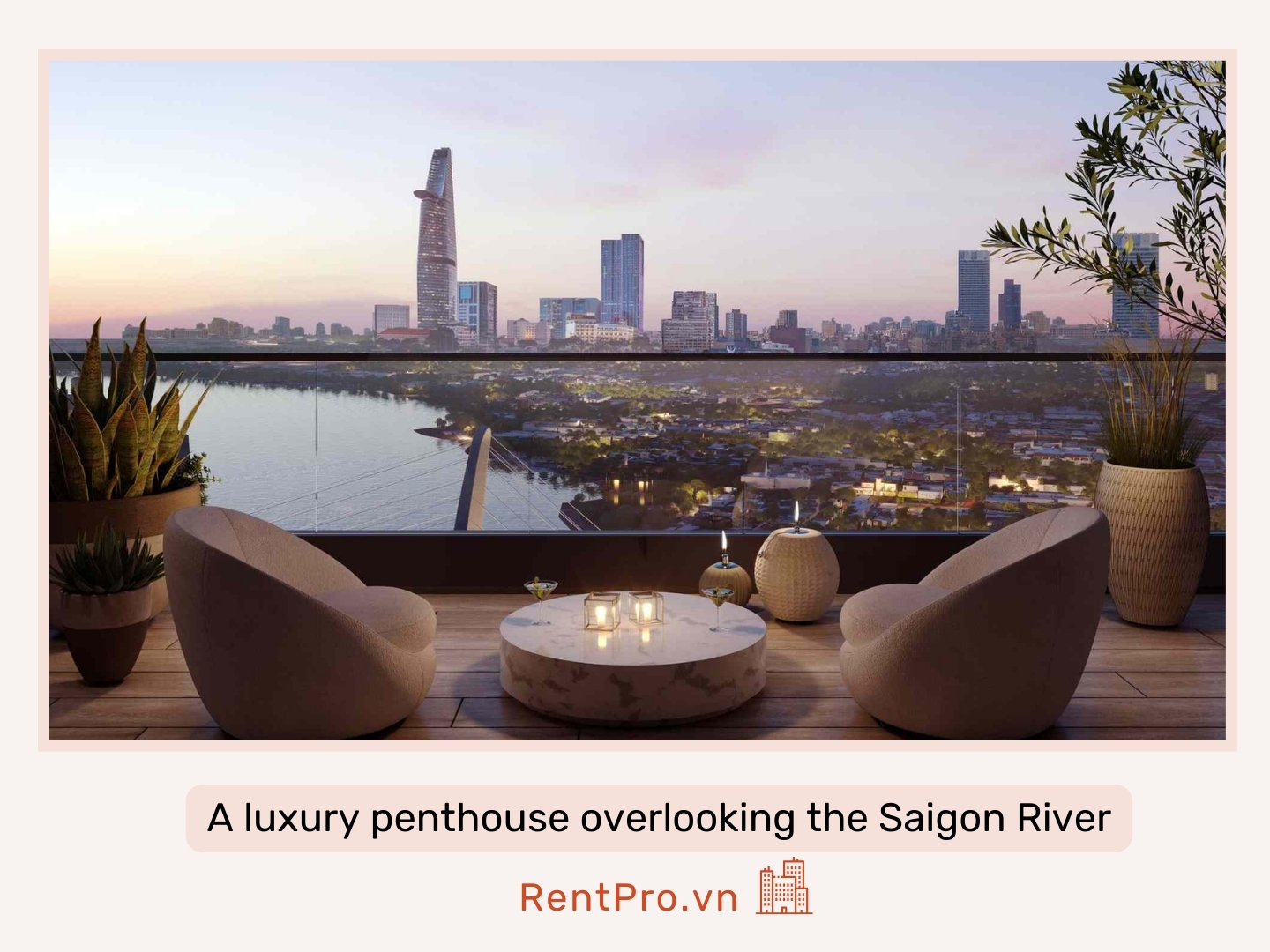
7.2 Affordable Housing Initiatives and Social Housing Policies
To address housing demand among low-income groups, the government has launched several affordable housing initiatives. Social housing projects in areas like Binh Chanh and Thu Duc City aim to provide budget-friendly options for workers and first-time buyers. Prices for these units range from $1,200 to $1,500 per square meter, with eligibility criteria ensuring access for disadvantaged groups.
- Social Housing Projects:
- Long An Social Housing Scheme: Targeting 310,000 units by 2030.
- Binh Duong Worker Housing Initiative: Focused on industrial zones.
7.3 Mid-Range Housing Market Growth
Mid-range housing dominates Saigon’s market, appealing to the city’s growing middle class. Districts like Binh Tan and Go Vap are hotspots, offering properties priced between $2,000 and $2,500 per square meter. These homes are popular among young families and professionals seeking affordability without compromising on quality.
- Popular Mid-Range Projects:
- Lavita Charm (Thu Duc City): Modern apartments with integrated amenities.
- Moonlight Residences (Binh Tan): Family-friendly housing with parks and schools nearby.
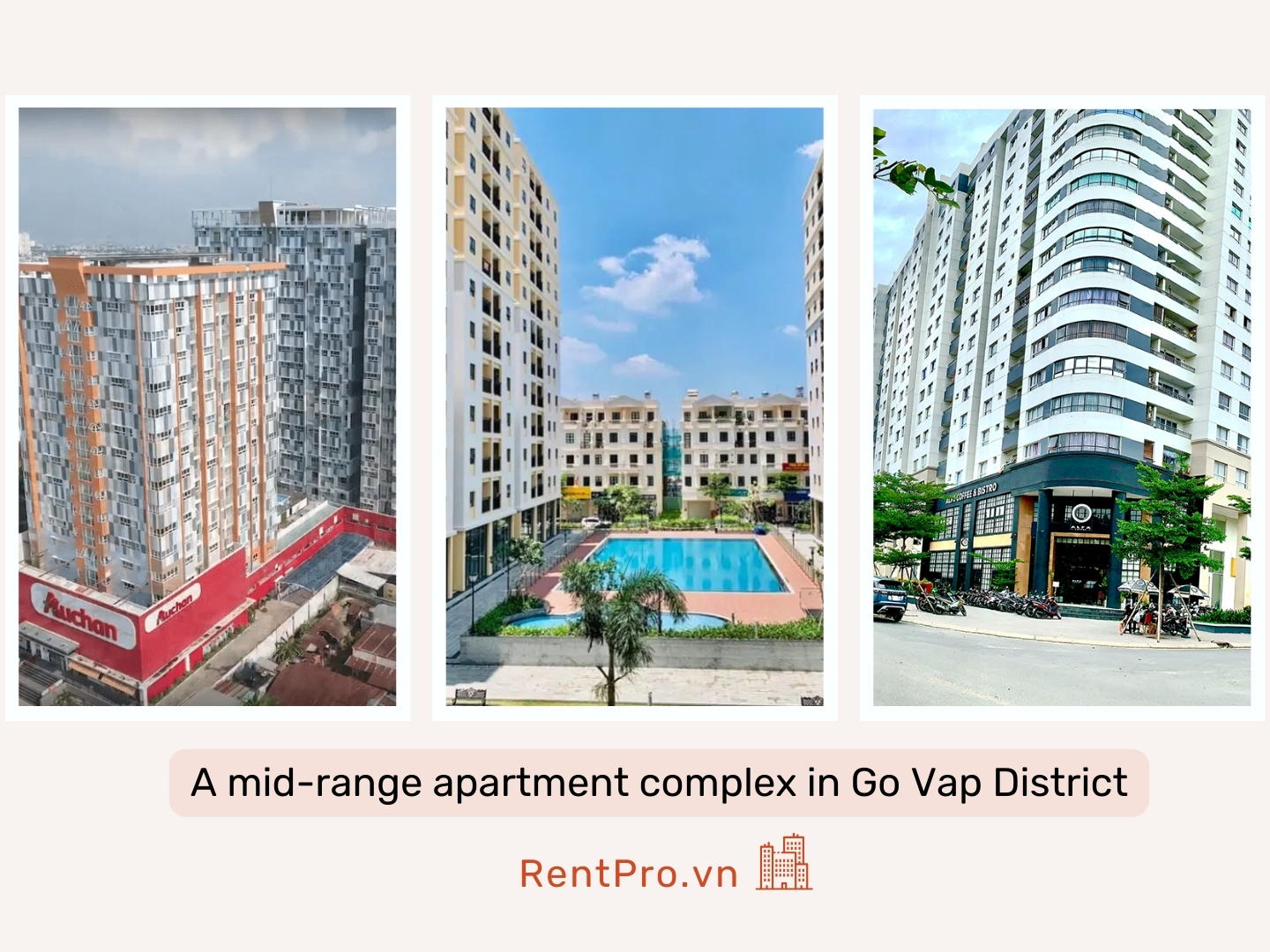
7.4 Rentals and Leasing Trends in Saigon
The rental market in Saigon is robust, driven by expatriates and a transient workforce. Apartments in Phu Nhuan and Tan Binh, close to business hubs, are highly sought after. Rental yields in prime areas average 3.7% to 4%, with serviced apartments commanding premium rates. For budget-conscious renters, suburban districts like Cu Chi offer affordable options.
- Rental Highlights by Area:
- Phu Nhuan District: High-end serviced apartments for professionals.
- Tan Binh District: Proximity to the airport, popular among business travelers.
- Cu Chi District: Budget-friendly rentals with larger living spaces.
Pro Tip: For renters, explore serviced apartments in Phu Nhuan for convenience. Investors should target mid-range developments in Thu Duc City for steady rental returns.
Legal and Regulatory Landscape
8.1 Key Laws Impacting Real Estate Transactions
The Vietnamese legal framework for real estate transactions is governed by the Law on Housing 2014 and the Law on Real Estate Business 2014. These laws regulate ownership rights, leasing agreements, and property sales for both locals and foreigners. The Land Law 2013 also plays a vital role, defining land use rights and restrictions, which often require developers to secure leases from the state rather than outright ownership.
Key Legal Provisions:
- Ownership Rights: Foreigners can own residential properties but not the land.
- Land Use Agreements: Developers must comply with state leasing requirements.
- Contractual Clarity: Real estate transactions must be notarized for validity.
8.2 Policies on Foreign Ownership of Property
Since 2014, Vietnam has significantly eased restrictions on foreign property ownership, attracting international investors. Foreigners can now own up to 30% of units in a condominium or 250 landed properties per administrative area. Ownership terms are capped at 50 years, but extensions are possible. However, challenges persist due to inconsistencies in implementation and interpretation of these laws.
Foreign Ownership Policies:
- Eligibility: Valid passport with an entry stamp is required.
- Limits: Applies to 30% of units in any condominium.
- Extensions: Ownership can be renewed upon expiration.
8.3 Taxation, Fees, and Compliance Requirements
Real estate transactions in Vietnam involve various taxes and fees that buyers and sellers must account for. These include a 10% value-added tax (VAT) for new properties and a 2% income tax on resale profits. Foreign buyers are also subject to registration fees and mandatory compliance with local regulations, adding to the overall costs.
Common Taxes and Fees:
- VAT on New Properties: 10% of the purchase price.
- Resale Income Tax: 2% of profits.
- Registration Fees: Varies by property type and location.
8.4 Future Amendments and Their Expected Impact
Upcoming amendments to Vietnam’s housing laws, effective from 2025, aim to simplify real estate transactions for both domestic and foreign investors. Key changes include streamlining the licensing process and providing clearer guidelines for foreign ownership. These reforms are expected to increase transparency, attract more international buyers, and boost market confidence.
Notable Amendments:
- Simplified Licensing: Reducing paperwork for developers and buyers.
- Enhanced Transparency: Clearer rules for foreign investment.
- Expected Impact: Surge in foreign ownership and faster project approvals.
Pro Tip: Foreign investors should consult with local legal experts to navigate compliance requirements effectively and take advantage of upcoming regulatory reforms.
Future Outlook and Forecast
9.1 Predicted Growth Trends Over the Next 5 Years
Saigon’s real estate market is expected to grow at a 12.55% compound annual growth rate (CAGR), reaching a projected market size of $45.62 billion by 2029. Urbanization and economic expansion will drive housing demand, particularly in emerging districts like Thu Duc City and Binh Chanh. Investors can expect steady appreciation in both residential and commercial properties, with mid-range housing likely to dominate.
Growth Highlights:
- Market size growth to $45.62 billion by 2029.
- Mid-range housing expected to lead demand.
- Focus on urban fringe areas for new developments.
9.2 Factors Shaping Future Demand and Supply
Multiple factors will influence Saigon’s real estate dynamics, including population growth, rising incomes, and government incentives. Demand for affordable housing will surge as urban migration increases. On the supply side, government-backed projects aim to deliver 84,400 units by 2025, mitigating the current shortage but requiring streamlined approvals.
- Key Demand Drivers:
- Increased urbanization to 45% by 2030.
- Rising disposable incomes among young professionals.
- Demand for green and smart housing options.
9.3 Impact of Proposed Infrastructure Developments
Saigon’s infrastructure expansion will significantly shape its housing market. Projects like Metro Line 1 and Ring Road 3 will improve connectivity, making peripheral districts like Thu Duc City and District 9 more attractive for both buyers and developers. Enhanced transportation networks are expected to drive property appreciation in these areas by 10%-15% in the short term.
Key Infrastructure Projects:
- Metro Line 1: Boosts connectivity to central Saigon.
- Ring Road 3: Opens up suburban districts for development.
- Airport Expansion: Supports growth in Tan Binh District.

9.4 Technology and Sustainability in the Housing Sector
The future of Saigon’s real estate will be defined by technological advancements and sustainable practices. Smart home technology, energy-efficient buildings, and green certifications are becoming standard in new developments. Developers like Vinhomes are pioneering integrated housing solutions, combining technology with eco-friendly designs to appeal to modern buyers.
Emerging Trends in Housing:
- Smart home features integrated into luxury and mid-range projects.
- Use of solar panels and rainwater harvesting systems.
- Development of green spaces and eco-conscious community planning.
Pro Tip: Invest in areas benefiting from new infrastructure developments and prioritize projects incorporating smart and sustainable features for long-term value.
Actionable Insights for Buyers and Investors
10.1 Tips for First-Time Homebuyers
First-time buyers in Saigon should focus on mid-range properties in growing districts like Binh Tan and Thu Duc City. These areas offer affordable prices, starting at $1,800 per square meter, and promise steady appreciation due to infrastructure upgrades. Consider prioritizing projects with integrated amenities and proximity to transportation hubs for added convenience.
Steps for First-Time Buyers:
- Define your budget and secure pre-approval for mortgages.
- Research neighborhoods with good schools, healthcare, and retail options.
- Choose reputable developers to avoid construction delays.
10.2 Recommendations for Foreign Investors
Foreign investors can capitalize on Saigon’s rising rental yields, especially in expatriate-friendly areas like Thao Dien and Phu Nhuan. With liberalized ownership laws, you can own up to 30% of units in a condominium or 250 landed properties per area. Look for properties with high rental demand and proximity to international schools or business districts.
Key Recommendations:
- Focus on serviced apartments in District 2 for rental income.
- Leverage professional legal assistance for smoother transactions.
- Monitor regulatory changes, like the upcoming 2025 amendments.
In Saigon’s competitive market, timing and due diligence are crucial. Analyze ongoing infrastructure developments like Metro Line 1 to identify districts poised for growth. Attend property expos or consult with local agents to gain insights into pricing trends and new launches.
Pro Tips for Navigating the Market:
- Visit properties during weekdays to avoid crowds and secure better deals.
- Verify developer credentials and construction timelines.
- Use online platforms like RentPro.vn to explore listings.
10.4 Leveraging Market Trends for Profitable Decisions
Aligning investments with Saigon’s market trends can maximize profits. Target mid-range developments in emerging districts, as these cater to the city’s growing middle class. Stay informed about FDI trends, which are driving demand for luxury properties in central areas.
Market Trends to Leverage:
- Growing demand for affordable housing near industrial zones.
- Rising popularity of green and smart homes in premium projects.
- High ROI potential in districts benefiting from new infrastructure.
Pro Tip: Work with a local real estate expert to identify undervalued areas with growth potential, and always consider the long-term impact of infrastructure and regulatory changes.
The Saigon housing market is an exciting and dynamic landscape, brimming with opportunities for buyers and investors alike. From luxury apartments in District 1 to affordable housing initiatives in Thu Duc City, the market caters to a wide array of needs and budgets. With ongoing infrastructure developments like Metro Line 1 and government reforms simplifying property ownership, Saigon’s real estate sector is poised for sustained growth. Whether you’re a first-time buyer, a seasoned investor, or seeking rental properties, staying informed about market trends is key to making smart decisions. Explore Saigon’s rental market today on RentPro.vn and discover properties tailored to your needs.


